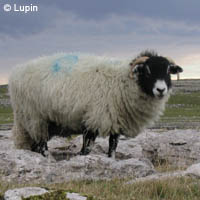Bluetongue reaches northern Europe
The Bluetongue virus (BTV), has been reported in the area of Limburg in the southern Netherlands, close to the German and Belgian borders. The outbreak, around Kerkrade, is the first time the virus has been found in northern Europe. So far, experts are at a loss to explain how the virus ventured so far north. The virus is normally associated with warmer climates further south, where it is spread by the midge. The virus can infect a range of animals, from sheep, goats and buffaloes, to deer, antelope and camels. The severity of the disease varies according to species. Sheep are thought to be particularly susceptible, with mortality rates running up to 75 per cent. BTV is of no risk to humans. Because the disease is common in southern Europe, an expert from Italy, where the disease is common, has gone to Limburg to assess the situation. Meanwhile a laboratory in the UK is investigating which strain of BTV has emerged. The UK is also in the process of investigating the spread of BTV through satellite tracking. The outbreak could be an anomaly, but the Dutch authorities are looking at potential outbreaks in 10 farms in Limburg. Transportation of animals and animal products has been halted in a 20 km area around the infections, while there is a surveillance zone up to 100 km away and protection zones a further 50 km away. These precautions are all part of the EU's directive 2000/75/EC for the containment of BTV. The spread of BTV to northern Europe could be due to the very hot July experienced in central and northern Europe. The vector for BTV is the midge Culicoides imicola, which requires temperatures of at least 12 degrees centigrade to survive, and temperatures of over 15 degrees centigrade to permit viral replication. These conditions could have been sustained for several weeks during the hot summer. To prevent any further spread of vectors or potential vectors, farmers in the immediate area have been instructed to spray insecticide. The EU TRACES system can now be used to determine where sheep exports have transported animals, and whether there is any evidence of BTV spreading.
Countries
Netherlands



